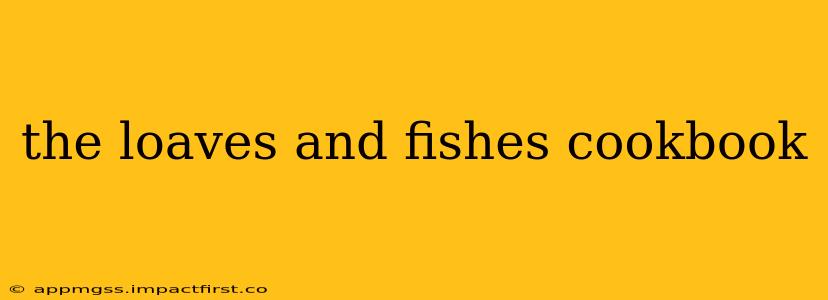The "Loaves and Fishes" story, a powerful parable of miraculous abundance, has inspired countless interpretations and discussions throughout history. But beyond the theological significance, this iconic tale also speaks to the power of sharing, generosity, and the transformative potential of resourcefulness. This blog post delves into the culinary aspects of this enduring narrative, exploring recipes inspired by the story and examining its continuing relevance in our modern world. We'll explore the historical context, examine the potential ingredients, and even suggest some recipes that capture the spirit of this miraculous event.
What Did the Loaves and Fishes Actually Look Like?
This is a question that has fascinated biblical scholars and food historians alike. The Bible doesn't offer a detailed description of the loaves and fishes. However, based on the historical context of first-century Galilee, we can make some educated guesses. The loaves were likely flatbreads, similar to pita or matzah, made from barley or wheat flour. The fish were probably common freshwater varieties found in the Sea of Galilee, such as tilapia or mullet, likely small and easily caught. This humble nature of the food underscores the miraculous nature of the multiplication.
What Kind of Fish Were They?
As mentioned above, the most likely candidates are small freshwater fish found in the Sea of Galilee. Tilapia and mullet are the most commonly cited possibilities due to their abundance in the region at that time. The text doesn't specify the type, further emphasizing the simplicity of the offering and the extraordinary nature of the miracle. Focusing on readily available and inexpensive fish aligns with the overall message of sharing limited resources.
What Recipe Could Reflect the Loaves and Fishes Miracle?
While we can't recreate the exact miracle, we can create dishes inspired by the simplicity and abundance it represents. A simple recipe focusing on readily available ingredients and easily multiplied portions perfectly captures the essence of the story. Consider a recipe like this:
Simple Galilee-Inspired Flatbread with Roasted Tilapia:
-
Ingredients:
- Whole wheat flour
- Water
- Salt
- Olive oil
- Fresh Tilapia fillets
- Lemon juice
- Herbs (such as rosemary, thyme, or oregano)
-
Instructions:
- Prepare simple flatbreads using flour, water, salt, and a touch of olive oil.
- Marinate Tilapia fillets in lemon juice and herbs.
- Roast the fish until cooked through.
- Serve the fish with the freshly baked flatbreads.
This recipe uses readily available ingredients and is easily scaled up to feed a crowd, mirroring the miraculous multiplication of food in the biblical account. The focus is on fresh, simple flavors, highlighting the abundance that can be created from humble beginnings.
How Does the Loaves and Fishes Story Apply Today?
The Loaves and Fishes story remains relevant today as a powerful message of sharing, compassion, and resourcefulness. It reminds us that even limited resources, when shared generously, can create abundance. In our modern world, marked by inequalities and food insecurity, the story serves as a call to action, urging us to address hunger and poverty through collective effort and compassion.
This culinary exploration of the Loaves and Fishes story demonstrates its enduring power and provides a framework for understanding its deeper meaning. It's a tale that transcends time and culture, offering a message of hope and possibility, even in the face of scarcity.
